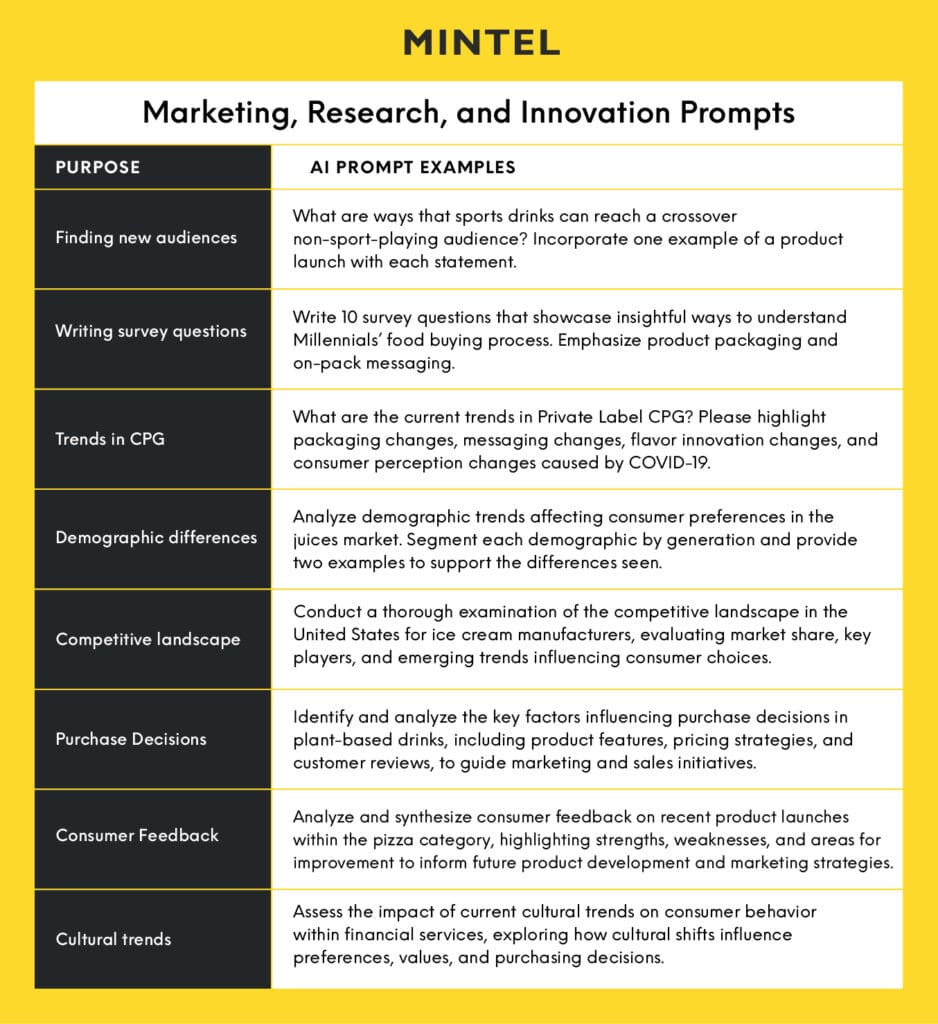In the exciting world of Artificial Intelligence (AI), prompts are instructions or queries you enter into the AI interface to get responses. If you want helpful responses, you need to know how to input useful information and instructions. Known as AI prompt engineering, it’s a strategy that focuses on designing strategic prompts to guide machine learning models (MLMs) and large language models (LLMs) toward the desired output. Instead of just a question, well-thought-out prompts act like soft programming, resulting in specific responses with enhanced accuracy and value.
This is a good time to clarify something. A prompt is not the same as a ‘search.’ Search is when you look for information on a particular topic using keywords and get a list of results that more or less match the query. As noted above, AI prompt engineering is direct and leads to a specific response.
Whether you’re new to prompt writing or looking for quick tips on how to write effective AI prompts, we’re sharing our four tried-and-tested pillars to creating AI prompts (*pro tip: bookmark this article or print this simplified version to keep on your desk!). While these pillars are specifically designed to improve the quality of response when using Mintel Leap—our new, closed-loop generative AI tool—they absolutely apply no matter what gen AI tool you happen to be using.
Four pillars to creating AI prompts
The best AI prompts start with a good question, but it’s so much more than that.
- Category: What category/industry are you searching? CPG? Beauty? Financial Services?
- Market: Are you looking into a specific country or region?
- Audience: Who are you targeting? Gen Z? Families? Over 65?
- Time Frame: Are you looking at the last 5 years? Next 3 years?
Using the direction of the four pillars above, let’s explore an example of creating effective AI prompts:
“What are the key trends driving younger consumer preference in the housecleaning category in the US market over the next five years?”
Polishing your prompt writing skills
Let’s explore how the four pillars provide direction across a handful of sectors and teams, including an insights team at an advertising agency, a marketing team in the financial services sector, and an innovation team in the food and drink industry.
Prompt building for an Agency Insights team
A strategist at an agency wants to market a new RTD coffee to Gen Z in the US:
- Initial question: What are current and future RTD coffee trends in the US?
- In the form of a prompt: Tell me the current and future RTD coffee trends aimed at Gen Z in the US.
- Applying the four pillars: What are the current and future RTD coffee trends aimed at Gen Z in the US? Based on this information, build me a step-by-step strategy to market our new RTD coffee to Gen Z.
Prompt building for a Financial Services Marketing team
A major bank in the UK wants to grow its customer count, focusing especially on higher-income Millennials:
- Initial question: How can brands resonate with Millennials?
- In the form of a prompt: I want to grow my banking customer count by focusing on higher-income Millennials in the UK. How can I resonate with Millennials’ financial ambitions and position the brand as a tool for financial growth or wealth building?
- Applying the four pillars: I want to grow my banking customer count by focusing on higher-income Millennials in the UK. How can brand messaging resonate with their financial ambitions and position the brand as a tool for financial growth or wealth building? Based on this, create a list of actions to take from most important to least important.
Prompt building for a Food and Drink Innovation team
A yogurt innovation team is in charge of developing a new product targeted at seniors in Japan. They want to gather as much information as possible to create the most appealing product.
- Initial question: What yogurts appeal to seniors?
- In the form of a prompt: I want to create a yogurt targeted at seniors. What should I do?
- Applying the four pillars: I want to create a yogurt targeted at seniors in Japan. First, tell me what I should focus on. Then, based on this, come up with the three best yogurt concepts.
How to handle AI prompt issues
The biggest issue most of us face with generative AI is providing clear instructions. While it is important to provide context, conciseness is equally crucial. Verbose prompts can confuse the AI or lead it to focus on less relevant aspects of your prompt. You may need to refine your prompt and build on the analysis with additional prompts as you go along. From the start, aim for a balance by providing enough detail for clarity and context, but be as concise as possible.
Marketing, Research, and Innovation prompts from Mintel Leap users
Mintel Leap is designed to transform hours of research into answers in seconds. It’s a tool you can trust, as it only analyzes Mintel’s proprietary research and human analysis (based on the client’s subscription).
For a better understanding, check out this on-demand demo.
As you can imagine, Mintel Leap has developed quite a fanbase—both among our clients and Mintel employees. If you called us ‘obsessed,’ you wouldn’t be too far off. Because of this enthusiastic following, we’ve compiled (and generalized) some of the top prompts used with Leap. Find one (or many!) you like, apply the four pillars to make them specific to your needs, and watch the magic happen.
We recommend booking a personalized demo to put your prompts to the test and experience the incredible power of Mintel Leap!
Book a Demo

Stuck for inspiration? Ask AI for tips on writing the best AI prompt
AI prompt engineering tailors generative model responses for relevance, clarity, and depth. Once you know how to write the best AI prompts, you’ll be able to achieve more accurate outputs more quickly.
As the technology continues to evolve, careful prompt creation will only become more important in enhancing outputs. The four pillars and example prompts shared here are meant to inspire you to write your own prompts relevant to your business. Happy prompt writing, and remember, if you’re drawing a blank, just ask the AI what questions you should be asking.








